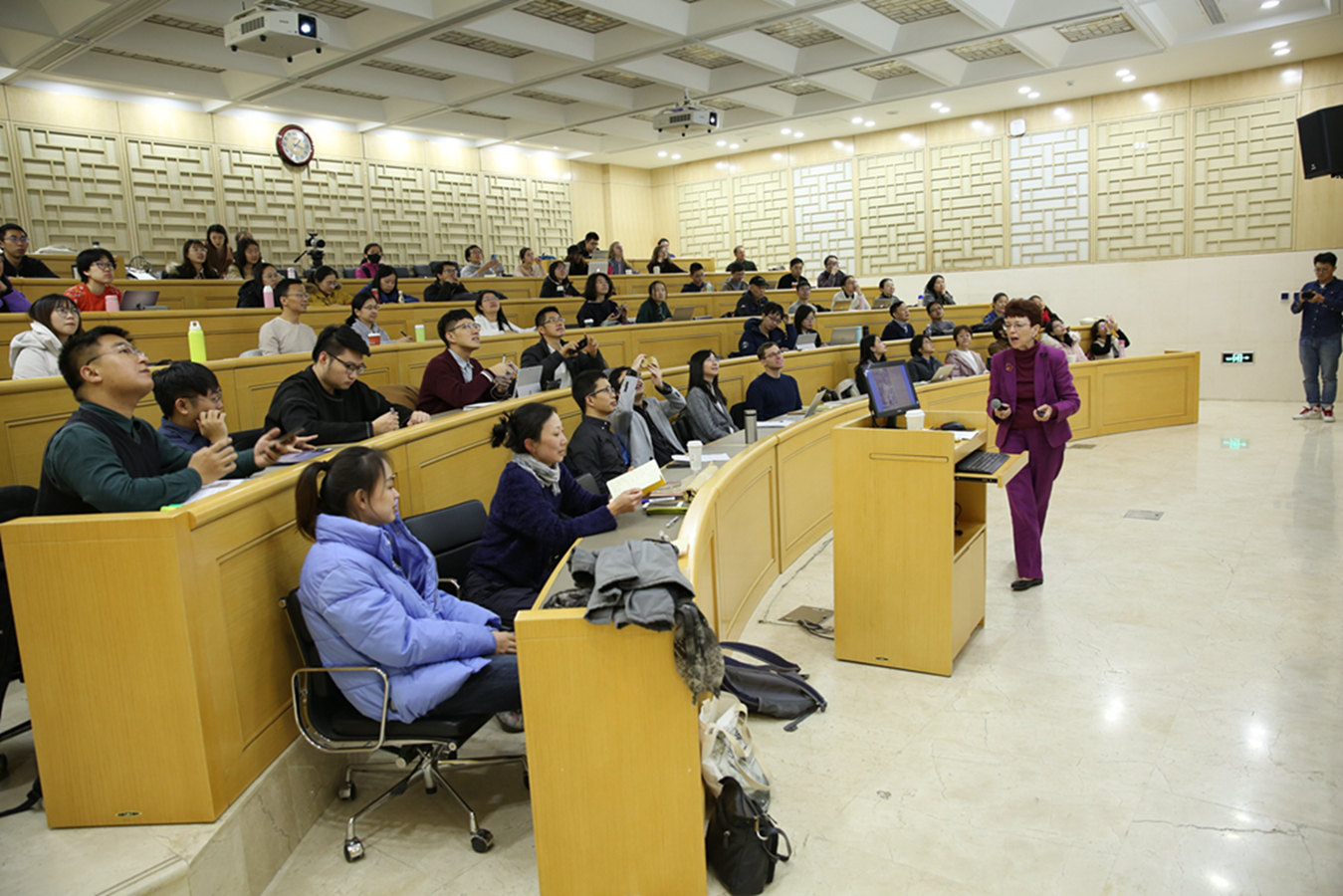
The Institute of Area Studies, Peking University held its 11th New Buds Salon, on the theme of "Christianity, Conversion and Overseas Chinese: Historical Moments in Religious Interaction," on November 25. Prof. Barbara Watson Andaya, from the Asian Studies Program of the University of Hawaii and former president of the American Association of Asian Studies (AAS), was invited to exchange views with students on studies of the history and religion of Southeast Asia. The salon was moderated by Xie Kankan, assistant professor of Southeast Asian studies at PKU’s School of Foreign Languages, with Chen Boyi, associate professor at the Department of History at Xiamen University, and Ni Yun, assistant professor at the Department of English Language and Literature from PKU’s School of Foreign Languages, being the discussants in the conversation.
Prof. Andaya’s current research focuses on religious interaction in Southeast Asia between 1511 and 1900. She first shared her latest research results, explaining why Christianity developed relatively slowly among Southeast Asian Chinese before the 20th century, but expanded rapidly in the first half of the 20th century. Prof. Andaya conducted a comparative study of the Philippines under the rule of Spain in the 17th century, the British Straits Settlement in the 19th century, and British Malaya and the Dutch East Indies in the 1930s. She argued that only under mature historical conditions were foreign religions able to achieve substantial development in the region. Her research aims at sorting out global connectivity in religious exchanges and analyzes religious interaction in Southeast Asia within the framework of world history.
After Emperor Longqing (the 12th emperor of the Ming Dynasty) relaxed the embargo on overseas trade in 1567, the number of Chinese people living in Manila increased rapidly. Missionaries of the Dominican Order in Spain hoped to open the door to China through the local overseas Chinese. However, this attempt had little effect. According to Prof. Andaya, at that time during the Spanish colonial rule, Chinese living in Manila suffered from discrimination, and trade disputes also occurred occasionally. In addition, the Chinese generally feared that conversion to Christianity would lead to the loss of their traditional culture, and, as a result, the number of Chinese Christians in the Philippines grew very slowly. In contrast, in the British Straits Settlement in the 19th century, the British missionaries saw the power of language and education, and set up Anglo-Chinese schools in this context. Even so, the appeal of Christianity to local Chinese was still very limited, because conversion meant a fundamental reconstruction of their belief system. In addition, anti-Christian sentiment caused by the Taiping Heavenly Kingdom Movement also spread rapidly among overseas Chinese, and thus hindered the development of Christianity among overseas Chinese.
By contrast, the 1930s was a very different time in history. During this period, the Christian revival movement in East Asia, the rise of Pentecostalism in the US, the collapse of the Qing Dynasty and other factors gave rise to a special historical stage for the activities of the Chinese religious leader John Sung in Southeast Asia. Influenced by black gospel music and Pentecostalism, John Sung had a very infectious preaching style. At the same time, he believed that the overseas Chinese should keep their traditional Chinese customs while converting to Christianity, which was warmly welcomed by the Chinese communities in the British Malaya and the Dutch East Indies.
Based on the above three cases, Prof. Andaya pointed out that Christians are still a minority group among Chinese in Southeast Asia. Analysis of the conversion of their belief system should be carried out in the specific historical context, and historians should pay special attention to the historical environment of people’s religious interaction. She expressed her belief that the study of the Christian history of the Chinese in Southeast Asia could be enlightening. However, it would be necessary for us to consider various factors that affect religious and social transformation in order to discuss them in the context of globalization and comparison.
After Prof. Andaya’s presentation, the floor was open for conversation. Prof. Ni Yun discussed with Prof. Andaya about the relationship between the promotion of Mandarin and nationalism, the cultural identity of Chinese in Southeast Asia, and the historical background of John Sung’s local activities. Prof. Chen Boyi focused on the impact of Spanish policies on Chinese Filipinos and the differences between the unfederated Malay States and Straits Settlements in the early 19th century. Teachers and students who were present also actively participated in the discussion and exchanged ideas with Prof. Andaya on the relationship between the colonial government and preaching activities in Southeast Asia, the differences caused by dialects and native places among the Southeast Asian Chinese, the influence of Confucianism renaissance and nationalism on John Sung, the localization of Christianity in Southeast Asia and other topics. At the end of the salon, Prof. Xie Kankan emphasized again the importance of comparative study on the history of religion of Chinese in Southeast Asia and the relationship between globalization and localization.


